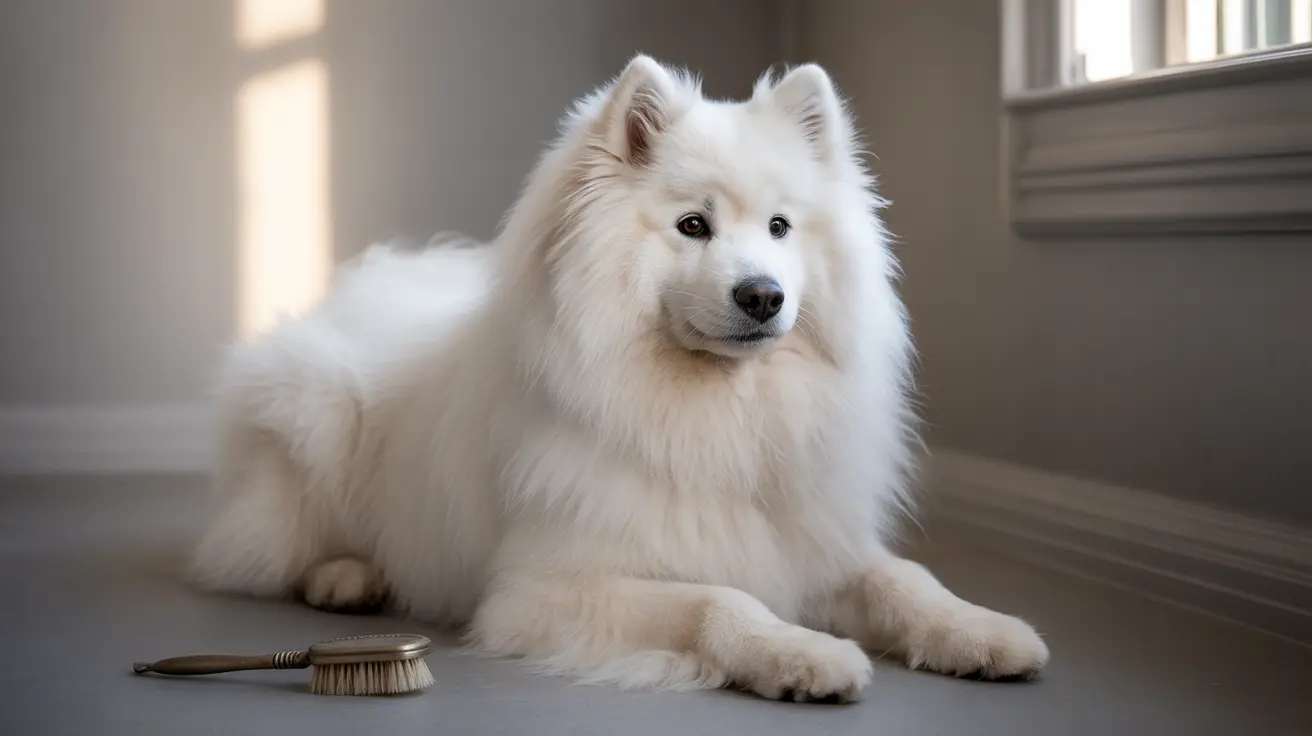The Samoyed's stunning white coat is one of its most distinctive features, but there's more to these Arctic dogs than meets the eye. While they're famous for their snow-white appearance, Samoyeds actually come in several subtle and beautiful color variations, each officially recognized by major kennel clubs worldwide.
In this comprehensive guide, we'll explore the fascinating world of Samoyed colors, from their genetic foundations to practical care tips for maintaining their magnificent coats. Whether you're a potential owner, breed enthusiast, or simply curious about these magnificent dogs, you'll discover everything you need to know about Samoyed coat colors and their unique characteristics.
Official Samoyed Color Variations
The American Kennel Club (AKC) recognizes four distinct coat colors for purebred Samoyeds:
- White (most common)
- Cream
- Biscuit
- White & Biscuit
Each color variation maintains the breed's characteristic plush, double-coated texture while offering subtle distinctions in shade. White remains the most prevalent and iconic color, embodying the breed's Arctic heritage and natural camouflage abilities.
The Genetics Behind Samoyed Coloring
Samoyed coat colors are the result of specific genetic combinations, particularly the e/e genotype at the Extension Locus. This genetic makeup prevents the expression of black and brown pigments in the fur, resulting in the breed's characteristic light coloring.
The intensity of cream or biscuit shading is influenced by the I Locus, which controls the dilution of red pigment. This explains why some Samoyeds appear pure white while others display subtle cream or biscuit tones.
Color Changes and Development
Samoyed puppies often undergo color changes as they mature. Many are born with cream or biscuit tints that may fade to white as they age. This transformation process typically completes by the time the dog reaches full maturity, usually around 2 years of age.
Understanding Color Stability
While subtle seasonal variations can occur, particularly during coat-blowing periods, a Samoyed's basic color pattern remains relatively stable throughout adulthood. Environmental factors like sun exposure may temporarily influence the intensity of cream or biscuit shades.
Coat Care and Maintenance
Maintaining the pristine appearance of a Samoyed's coat requires dedicated grooming efforts:
- Regular brushing (at least weekly)
- More frequent grooming during shedding seasons
- Proper nutrition for coat health
- Protection from excessive sun exposure
- Regular bathing with appropriate dog shampoos
Myths and Misconceptions
It's important to address common misconceptions about Samoyed colors. Pure-bred Samoyeds never come in black, brown, red, or merle variations. Any dog displaying these colors is not a purebred Samoyed, regardless of other physical characteristics.
Frequently Asked Questions
What are the recognized coat colors of purebred Samoyeds according to breed standards?
The officially recognized Samoyed colors are white, cream, biscuit, and white & biscuit. White is the most common, while biscuit variations are relatively rare. All colors must maintain the breed's characteristic luminous quality and proper texture.
How does genetics determine the white, cream, and biscuit colors in Samoyed coats?
Samoyed colors are determined by specific genetic combinations, primarily the e/e genotype that prevents black and brown pigment expression. The I Locus further influences the dilution of red pigment, creating the various shades from white to biscuit.
Why are Samoyeds mostly white, and can they ever have black or brown fur?
Samoyeds are predominantly white due to their Arctic heritage, where this coloring provided camouflage and sun protection. Pure-bred Samoyeds cannot have black or brown fur due to their genetic makeup, which completely inhibits these pigments in the coat.
Do Samoyed puppies' coat colors change as they grow, and how can I tell?
Yes, Samoyed puppies often start with cream or biscuit tints that may fade to white as they mature. The final adult color typically sets by age 2. Consulting with experienced breeders can help predict adult coloring.
How should I care for and groom my Samoyed's double coat to maintain its color and health?
Maintain your Samoyed's coat through regular brushing (at least weekly), increased grooming during shedding seasons, proper nutrition, and protection from excessive sun exposure. Use appropriate grooming tools and dog-specific shampoos for best results.






